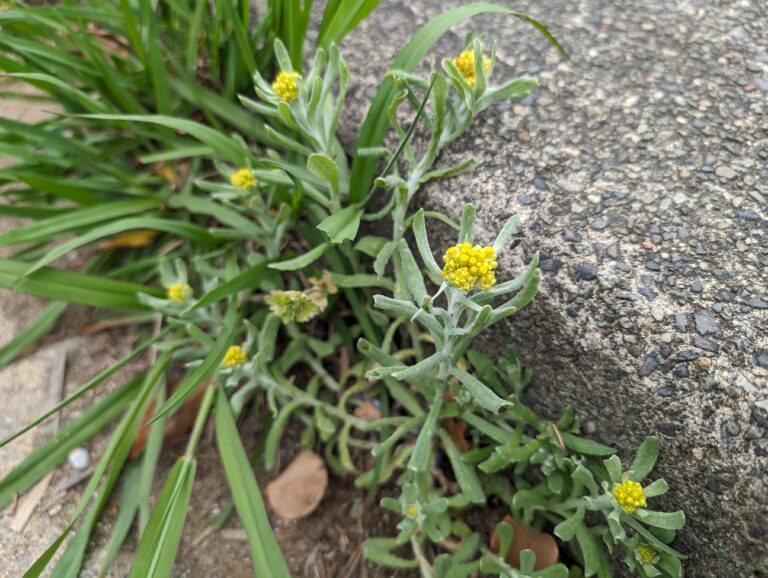In Japanese botanical philosophy, there’s a profound saying: “There’s no such thing as a weed.” This concept, from renowned Japanese botanist Dr. Tomitaro Makino, reminds us that every plant in nature has its proper name and purpose. What we casually dismiss as “weeds” are actually wild plants with unique characteristics and ecological importance. This article explores the beauty of these often-overlooked plants, their role in nature, and practical ways to incorporate them into your garden as ground cover—reducing maintenance while creating a more sustainable landscape.
The Origin of “There’s No Such Thing as a Weed”
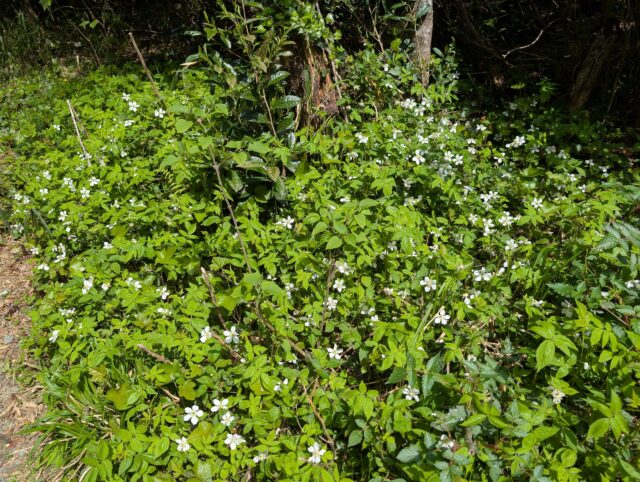
Who was Dr. Tomitaro Makino?
Dr. Tomitaro Makino (1862-1957) is often called “The Father of Japanese Botany.” Despite having minimal formal education, his self-taught expertise led him to discover over 1,500 new plant species. His dedication to plants took him across Japan, collecting more than 400,000 plant specimens throughout his lifetime.
Dr. Makino’s passion for botany reflected a distinctly Japanese appreciation for nature in all its forms—a perspective that saw beauty and purpose even in the most humble plants growing by the roadside.
The Story Behind the Famous Quote
The origin of this famous quote comes from a meaningful encounter. When young writer Shūgorō Yamamoto interviewed Dr. Makino and casually used the term “weed,” the botanist gently corrected him: “There’s no such thing as a weed in this world. Every plant has its proper name.”
This perspective exemplifies the Japanese cultural value of finding beauty in simplicity and respecting all elements of nature. Instead of dismissing certain plants as worthless, Dr. Makino recognized that each has its own identity and ecological role.
Imperial Influence
Dr. Makino’s philosophy even influenced the Japanese Imperial family. Emperor Hirohito, himself a marine biologist, was reported to have quoted Makino when a palace attendant apologized for leaving some “weeds” uncut in the imperial gardens.
The Emperor replied by referencing Makino’s philosophy: “There’s no such thing as a weed. Every plant has a name and lives in its preferred environment. It’s wrong to arbitrarily label them as weeds based on human perspective.”
This story demonstrates how deeply this botanical philosophy resonated within Japanese culture, reaching even the highest levels of society.
The True Nature of Plants We Call “Weeds”
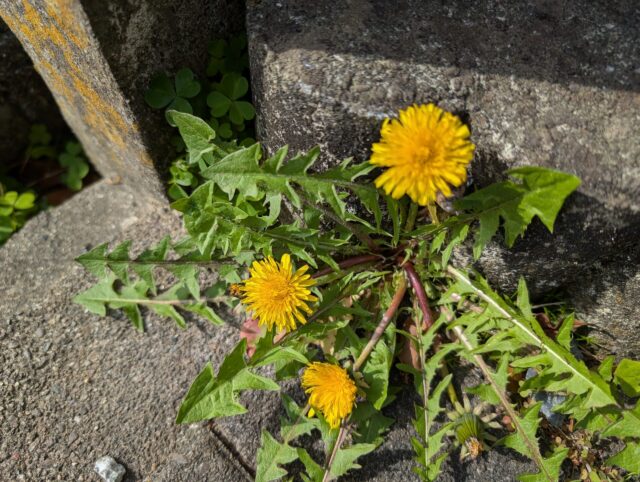
What Defines a “Weed”?
Botanically speaking, there is no scientific classification for “weeds.” This term is entirely human-created and typically refers to:
- Plants growing where humans don’t want them
- Plants that interfere with human activities or goals
- Plants that weren’t deliberately cultivated
This definition is entirely based on human perspective and convenience, not any botanical characteristic of the plants themselves.
The Blurry Line Between Weeds and Flowers
The distinction between what we call “weeds” and “flowers” is remarkably arbitrary. Consider these examples:
| Plant | When considered a “weed” | When considered a “flower” |
|---|---|---|
| Dandelion (Taraxacum officinale) | Growing in a lawn | Sold as seeds for garden planting |
| Clover (Trifolium) | Unwanted in grass | Cultivated as ground cover |
| Violet (Viola) | Growing uninvited | Expensive nursery purchase |
| Common daisy (Bellis perennis) | Lawn invader | Cottage garden staple |
When growing naturally, many plants are labeled “weeds,” but when deliberately planted, they become “wildflowers” or “native plants.” The inherent value of the plant doesn’t change—only our perception of it.
Ecological Importance of Wild Plants
Every plant, regardless of our labels, serves vital ecological functions:
- Habitat creation: Providing shelter and food for insects, birds, and small animals
- Soil protection: Preventing erosion by holding soil in place
- Nutrient cycling: Returning organic matter to soil when they decompose
- Pollinator support: Offering nectar and pollen for bees and butterflies
In Japanese gardening philosophy, there’s a recognition that nature maintains balance through diversity. By viewing all plants as valuable contributors to the ecosystem, we gain a more holistic understanding of our gardens and natural spaces.
The Unexpected Charm and Benefits of Wild Plants
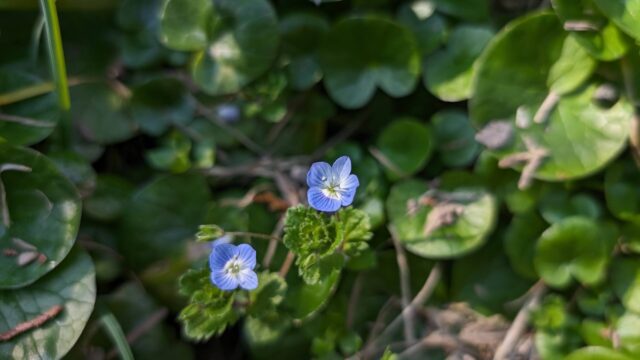
Beautiful Wildflowers Often Dismissed as Weeds
Many plants labeled as “weeds” produce surprisingly beautiful flowers when observed closely. In Japan, we appreciate the subtle beauty of these common wild plants:
- Hotokenoza (Lamium amplexicaule or Henbit Deadnettle): Delicate purple tubular flowers with intricate patterns
- Ooinu-no-fuguri (Veronica persica or Persian Speedwell): Small sky-blue flowers that resemble tiny stars scattered across spring gardens
- Tanpopo (Taraxacum spp. or Dandelion): Complex yellow composite flowers containing hundreds of individual florets
- Sumire (Viola spp. or Wild Violet): Charming purple-blue flowers that often emerge even through cracks in urban environments
These plants offer beautiful seasonal transitions in the Japanese garden, marking the subtle changes between seasons with their blooming periods.
Remarkable Resilience and Adaptability
The survival strategies of wild plants demonstrate impressive adaptability:
- Efficient seed dispersal: Using wind, animals, or mechanical methods to spread offspring
- Rapid growth cycles: Completing life cycles quickly to thrive in changing conditions
- Robust root systems: Accessing water and nutrients from challenging soil conditions
- Resource efficiency: Requiring minimal nutrients to flourish
This resilience, or what we might call “weed spirit” in Japan, offers valuable life lessons about persistence and making the most of difficult circumstances—a concept deeply resonant with Japanese cultural values of perseverance.
Ecological Services Provided by Wild Plants
In the Japanese gardening tradition, we recognize that wild plants provide essential services to the garden ecosystem:
- Soil health maintenance: Their roots prevent erosion and improve soil structure
- Insect habitat creation: Providing food and shelter for beneficial insects
- Honeybee and butterfly support: Serving as crucial nectar sources
- Soil nutrient enrichment: Returning organic matter when they decompose
In traditional Japanese gardens, there’s often a deliberate balance between cultivated areas and more natural zones where wild plants are allowed to fulfill these ecological roles.
Using Wild Plants as Ground Cover

What is Ground Cover?
Ground cover plants (グランドカバー in Japanese) are low-growing species that spread horizontally across the soil. They serve as living mulch, protecting and covering bare earth.
Using appropriate ground cover plants offers multiple benefits:
- Weed suppression: Prevents unwanted seeds from germinating
- Moisture retention: Reduces evaporation from soil
- Aesthetic improvement: Creates a more polished, finished look than bare soil
- Erosion control: Prevents soil loss from rain and wind
- Biodiversity support: Provides habitat for small creatures
In Japanese gardens, ground covers are often used to create a sense of tranquility and connection between different garden elements.
Characteristics of Ideal Ground Cover Plants
The best ground cover plants share these qualities:
- Horizontal growth habit: Spreading sideways rather than growing tall
- Low height: Staying close to the ground
- Hardiness: Thriving with minimal maintenance
- Good spreading capacity: Filling in empty spaces naturally
These characteristics allow ground cover plants to create a seamless, carpeted effect that requires minimal intervention once established—aligning with the Japanese aesthetic principle of natural harmony.
Common Wild Plants Suitable for Ground Cover
Many wild plants make excellent ground covers in Japanese gardens. Here are some that work particularly well:
Clover (Shiro-tsumekusa and Murasaki-tsumekusa)
- Trifolium repens (White Clover) and Trifolium pratense (Red Clover)
- Tolerates foot traffic and enriches soil by fixing nitrogen
- Attractive small flowers that attract pollinators
- Grows well in sunny locations
Wild Thyme and Wild Strawberry
- Pleasant fragrance and small edible fruits (strawberry)
- Tolerates moderate foot traffic
- Prefers sunny locations
- Creates a textured, naturalistic ground layer
Hime-iwadaresou (Lippia nodiflora)
- Drought-resistant and thrives in sunny locations
- Produces delicate lavender-purple flowers
- Spreads vigorously, so needs monitoring
- Excellent for hot, dry areas
Ooinu-no-fuguri (Veronica persica)
- Spring-blooming with bright blue flowers
- Grows in partial shade to full sun
- Drought-tolerant once established
- Spreads naturally without becoming invasive
In Japanese gardens, these plants create a naturalistic aesthetic while reducing maintenance—especially important as gardeners age and find intensive weeding more challenging.
Living Harmoniously with Wild Plants
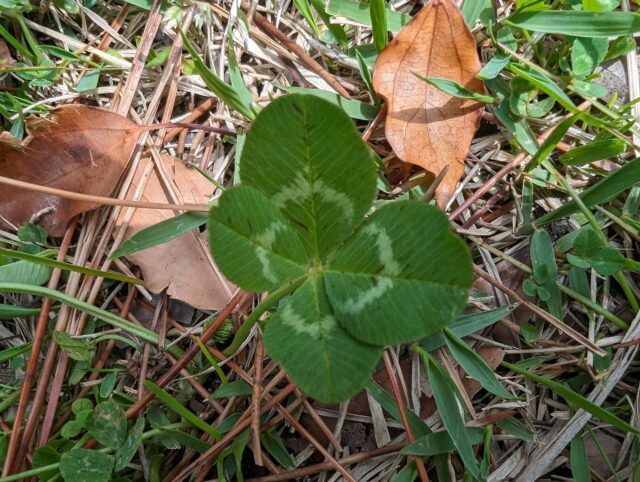
Embracing Coexistence Rather Than Elimination
In Japanese garden philosophy, there’s a growing appreciation for selective management rather than complete elimination of wild plants. This approach:
- Reduces physical strain from constant weeding
- Preserves beautiful flowering species
- Maintains ecological balance
- Creates a more sustainable garden
As gardeners age, especially beyond their 50s, this perspective shift becomes increasingly important for continuing to enjoy gardening without excessive physical demands.
Garden Zoning and Management Ideas
Consider dividing your garden into different management zones:
Formal Management Areas (Maintain Regularly)
- Entryway and approach
- Around windows
- Main garden seating areas
- Boundaries with neighbors
- Vegetable garden areas
Natural Areas (Allow Selective Wild Growth)
- Back corners of the garden
- Under trees
- Inside fence or wall boundaries
- Areas not frequently visited
In formal areas, maintain regular weeding or use mulch for weed prevention. In natural areas, simply trim occasionally and selectively allow beautiful wild plants to flourish—creating a garden that honors the Japanese concept of controlled naturalness.
Ground Cover Plants as a Low-Maintenance Strategy
Using ground cover plants strategically can significantly reduce weeding efforts:
Selecting Plants for Different Conditions:
- Sunny areas: Clover, Thyme, Lippia
- Partial shade/shade: Ajuga, Mosses, Wild violets
- Traffic areas: Clover, Thyme, Dichondra
Preparation for Success:
- Remove existing unwanted plants thoroughly
- Till soil and add appropriate organic matter
- Water regularly during establishment period
Planting Density:
- For quick coverage: Plant 8-12 inches (20-30 cm) apart
- For larger areas: Plant key spots and allow natural spreading
Once established, ground covers require only occasional trimming rather than constant weeding—creating a low-maintenance garden inspired by Japanese efficiency.
Creative Ways to Incorporate Wild Plants in Gardens
Creating a Wildflower Garden
A dedicated wildflower garden celebrates the beauty of natural plants. This concept, inspired by Japanese satoyama landscapes (the border zone between mountain foothills and arable flat land), creates a space where wild plants are welcomed rather than eliminated.
How to create your wildflower garden:
Choose a Location:
- Select an area with good sunlight
- Start in a less prominent garden section if you’re uncertain
- Consider visibility from seating areas for maximum enjoyment
Basic Preparation:
- Remove aggressive or invasive species
- Create simple pathways for observation
- Add natural elements like rocks or logs for dimension
Introducing Wildflowers:
- Sow seeds of attractive wildflowers (Persian Speedwell, Violets, etc.)
- Preserve naturally occurring beautiful species
- Occasionally trim to prevent excessive height
The beauty of this approach is minimal watering, fertilizing, or intensive maintenance—making it an age-friendly gardening style that can be enjoyed throughout life.
Seasonal Wild Plant Calendar
In Japan, we appreciate the changing seasons through wild plants. This seasonal awareness, called kisetsukan, can enhance your garden experience:
Spring Wildflowers:
- Persian Speedwell (Ooinu-no-fuguri) – bright blue flowers
- Henbit Deadnettle (Hotokenoza) – delicate purple flowers
- Dandelion (Tanpopo) – bright yellow blooms
- Wild Vetch (Karasu-no-endou) – pink/purple flowers
Summer Wildflowers:
- White Clover (Shiro-tsumekusa) – white flower clusters
- Red Clover (Murasaki-tsumekusa) – purple round flowers
- Daisy Fleabane (Hime-joon) – small white daisy-like flowers
- Purslane (Suberi-hiyu) – small yellow flowers
Autumn Wildflowers:
- Dayflower (Tsuyukusa) – vibrant blue flowers
- Goldenrod (Seitaka-awadachi-sou) – yellow flower clusters
- Liriope (Yaburan) – light purple flower spikes
- Knotweed (Mizosoba) – light pink flowers
By selectively managing wild plants based on seasonal interest, weeding becomes a mindful activity of choosing which plants to preserve for the current season—transforming a chore into a creative process.
Selecting Wild Plants for Your Specific Garden Environment
In Japanese gardening, we practice shokusei-ni-awaseru (matching plants to growing conditions). Choose wild plants that naturally thrive in your garden’s conditions:
Sunny Locations:
- White Clover (Shiro-tsumekusa)
- Common Dandelion (Seiyou-tanpopo)
- Daisy Fleabane (Hime-joon)
- Oxeye Daisy (Haruji-on)
Partial Shade:
- Wood Sorrel (Katabami)
- Violets (Sumire)
- Henbit Deadnettle (Hotokenoza)
- Houttuynia (Dokudami) – beautiful flowers despite strong scent
Moist Areas:
- Knotweed (Mizosoba)
- Dayflower (Tsuyukusa)
- Water Dropwort (Seri)
- Houttuynia (Dokudami)
The wild plants that naturally appear in your garden are indicators of your specific growing conditions. In Japanese gardening philosophy, these plants offer valuable information about your soil and microclimate—nature’s communication about what will thrive in your space.
Summary
The Japanese philosophy that “There’s no such thing as a weed” from Dr. Tomitaro Makino offers a refreshing perspective on garden plants often dismissed as unwanted. Every plant in nature has a proper name and ecological purpose, regardless of human labels.
As we age, constant weeding becomes physically challenging. Rather than fighting against these persistent plants, we can adopt a more balanced approach: maintaining formal areas while allowing beautiful wild plants to flourish in appropriate zones. Using wild plants as ground covers offers an excellent low-maintenance solution that reduces weeding while supporting local ecology.
By dividing gardens into managed and more natural areas, we create a balanced landscape that honors both human desires for order and nature’s tendency toward diversity. This approach, deeply rooted in Japanese garden philosophy, allows us to appreciate seasonal changes through wild plants and develop a more sustainable relationship with our gardens.
The next time you spot a “weed” in your garden, perhaps pause to look more closely—you might discover unexpected beauty and a valuable participant in your garden’s ecosystem, worthy of a place in your landscape.
